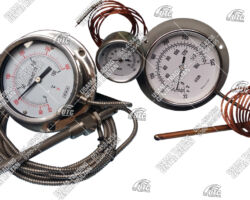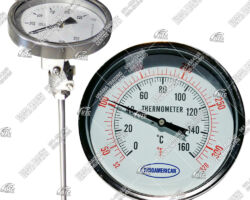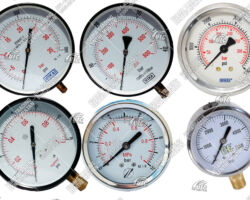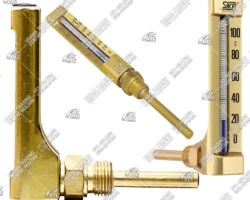Pressure & Temperatures Gauges
Pressure measurement is the analysis of an applied force by a fluid (liquid or gas) on a surface. Pressure is typically measured in units of force per unit of surface area. Many techniques have been developed for the measurement of pressure and vacuum, instruments used to measure and display pressure in an integral unit are called pressure gauges or vacuum gauges. A manometer is a good example, as it uses a column of liquid to both measure and indicate pressure. Likewise the widely used Bourdon gauge is a mechanical device which both measures and indicate and is probably the best known type of gauge.
Temperature is a physical quantity that is used to measure hot and cold. It is measured with thermometer calibrated in one or more temperature scales. The most commonly used scales are Celsius scale (formerly called centigrade) (denoted °C), Fahrenheit scale (denoted °F), and (Kelvin scale (denoted K). The Kelvin scale is widely used in science and technology.
The term degree is used in several scales of temperature. The symbol ° is usually used followed by the initial letter of unit, for example “°C” for degree (s) Celsius. A degree can be defined as a set change in temperature measures against a given scale, for example change between the points at which water starts to change state from solid to liquid state and the point at which it starts to change from its gaseous state to liquid.



